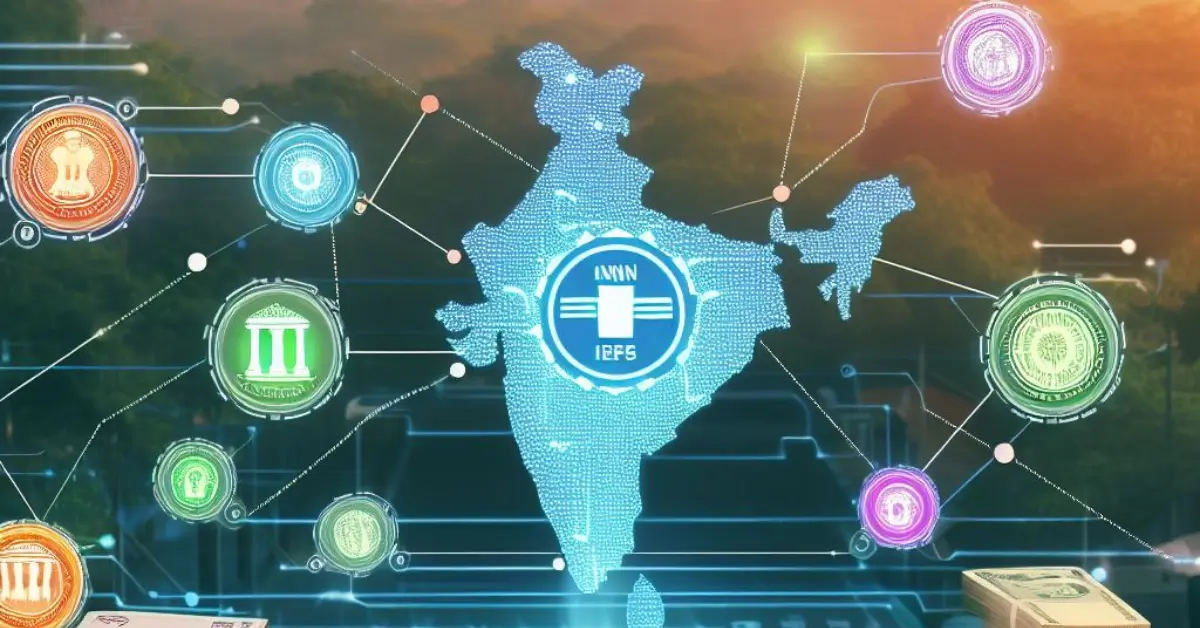In the ever-evolving landscape of online transactions, the National Electronic Funds Transfer (NEFT) system has become a vital player in facilitating seamless fund transfers within India. This article aims to unravel the intricacies of NEFT, particularly in the context of MCA21 services, addressing frequently asked questions to ensure a smoother financial experience for users.
In September 2019, a staggering 216.71 million National Electronic Funds Transfer (NEFT) transactions, amounting to ₹1,811,780.90 crore (equivalent to ₹23 trillion or US$281.96 billion in 2023), were executed. This marked a substantial leap compared to the entire year of 2013–15, where the total NEFT transactions were 661 million, with a cumulative value of ₹44 trillion (US$550 billion).
This exponential growth underscores the increasing prominence and widespread adoption of NEFT as a preferred digital payment method, reflecting its efficiency and convenience in facilitating financial transactions.
Page Index
What is NEFT?
NEFT, short for National Electronic Fund Transfer, is an online system that enables inter-bank and inter-branch fund transfers across India. This mechanism has significantly streamlined payment processes, particularly for services like MCA21.
In the dynamic landscape of digital transactions, NEFT (National Electronic Funds Transfer) emerges as a key player in simplifying the process of moving money. Established in November 2005, NEFT is an electronic funds transfer system meticulously managed by the Reserve Bank of India. Let’s dive into the features, advantages, and step-by-step process of how NEFT works.
Features of NEFT
- One-to-One Payment Facility: NEFT operates as a one-to-one payment facility, facilitating the secure transfer of funds between NEFT-enabled bank accounts.
- Regulation by RBI: Governed by the Reserve Bank of India, NEFT strictly adheres to the guidelines set by the RBI to ensure the safety and reliability of transactions.
- Timings and Real-time Processing: While NEFT transactions were initially time-bound, the scenario changed in 2020 when it transitioned to a 24*7 operational model. Despite this, it’s important to note that NEFT transactions do not occur in real-time, taking a few days to complete.
- Beneficiary Addition: To initiate NEFT transactions, users must first add beneficiaries through their Internet banking portals. This involves providing essential details such as the beneficiary’s name, bank account number, and IFSC code.
- No Transaction Limits: NEFT allows users to transfer funds without any restrictions on the amount, offering flexibility in managing financial transactions.
- Transaction Fees: A nominal fee, ranging from Rs. 2.5 to Rs. 25, is applicable to NEFT transactions, depending on the amount being transferred.
- Batch Processing: As per RBI guidelines, NEFT transactions are processed and settled in batches, each lasting half an hour.
Advantages of NEFT
- Easy and Convenient: NEFT simplifies fund transfers, making it an easy, convenient, and feasible option for users.
- Online Transactions: All NEFT transactions occur online, eliminating the need for third-party involvement and ensuring a seamless process.
- Safety and Security: With the backing of the RBI, NEFT transactions are secure, providing users with confidence in the safety of their financial transactions.
- Instant Notifications: Both the sender and receiver receive instant notifications upon the completion of an NEFT transaction, enhancing transparency.
- Economical: NEFT transactions do not require cheques or demand drafts, making them a cost-effective option for transferring money.
- Universal Applicability: Any individual, firm, or corporation with NEFT-enabled banks can leverage NEFT for their financial transactions.
- Diverse Usage: Beyond simple transfers, NEFT can be used to pay loan installments, credit card dues, EMIs, and more.
How does NEFT work?
- Login to Internet Banking: Access your Internet banking account.
- Navigate to Fund Transfer: Click on ‘Fund transfer’ on the main page.
- Select NEFT: From the drop-down menu, choose ‘NEFT.’
- Add Beneficiary: If not done earlier, add the beneficiary’s details by clicking on ‘Add beneficiary.’
- Enter Beneficiary Information: Input the required details such as name, bank account number, IFSC, etc.
- Authentication: Confirm the action by entering the OTP sent to your registered mobile number.
- Processing Time: Allow around 24 hours for the beneficiary to be added to your account.
- Initiate Transaction: Select the beneficiary and enter the amount to be transferred.
- Confirmation: Confirm the transaction, and the amount will be seamlessly transferred.
Understanding NEFT
Payment Processing and Timing: One common concern is the time it takes for payments to reflect in the system. Banks typically inform the MCA21 system about successful NEFT payments within four to five working hours. This quick turnaround time minimizes delays in crucial processes, such as company incorporation and eForm processing.
Transaction Charges: NEFT transaction charges, outlined on the RBI website, are in addition to the MCA21 filing fee. It’s crucial for users to be aware of these charges and plan their transactions accordingly.
UTN (Unique Transaction Number): Each NEFT transaction is assigned a Unique Transaction Number (UTN) by the user’s bank. This serves as a reference and is essential for tracking and verifying transactions.
Step-by-Step Process for NEFT Payments:
- Users initiate payments on the MCA21 portal, selecting ‘NEFT’ as the payment option.
- An eChallan, containing NEFT transfer instructions, is generated along with a Service Request Number (SRN).
- Funds are transferred to one of the designated MCA21 accounts using Internet banking.
- The bank provides a UTN for the NEFT transfer.
- Banks inform the MCA21 system about the payment, including the UTN.
- Users log in to MCA21 and link UTN and SRN under the ‘Link NEFT Payment’ service.
- Payment details are updated in the MCA21 system within 6 to 24 hours from the time of payment.
Tracking NEFT Transactions: Users can verify successful fund transfers through their bank branches. Once the transaction is linked to the SRN on the MCA21 portal, the ‘Track payment status’ link allows users to monitor the payment status.
Addressing Unsuccessful Payments: In cases of unsuccessful payments, users should promptly contact their bank to resolve issues related to the NEFT transaction.
NEFT Limits and Applicability: There is no limit on the amount that can be transferred using NEFT for current accounts, although personal accounts may have limits. Importantly, NEFT is available for all types of MCA21 payments.
Details for NEFT Transfers Users must transfer funds to the designated MCA accounts in HDFC Bank and Punjab National Bank. Account details, including account number, type, branch name, IFSC code, and beneficiary name, are provided.
Validity of eChallan: The eChallan for NEFT payments is valid based on the event date and the date of eChallan generation, as mentioned in the document.
Time Constraints and Division of Payments: NEFT operates within specific time windows on weekdays and Saturdays, excluding public holidays and Sundays. It’s important to note that the full amount for a specific SRN must be transferred in a single NEFT transaction; splitting payments is not permitted.
Handling UTN Issues: If a user misplaces the Unique Transaction Number (UTN), they should promptly contact their bank’s customer care for assistance.
Follow-up after NEFT Payments: After transferring funds, users must link the NEFT payment UTN with the SRN on the MCA21 portal. Any issues or problems related to payments should be raised on the MCA21 portal under the ‘User Complaints and Grievances’ section.
Service Charges for NEFT Transactions
National Electronic Funds Transfer (NEFT) has become an integral part of India’s digital financial landscape, providing a seamless platform for online money transfers. To ensure a comprehensive understanding of the process, let’s delve into the intricacies of NEFT service charges.
Inward Transactions:
- Free of Charge: Beneficiaries receiving funds through NEFT incur no charges, making it a cost-effective solution.
Outward Transactions:
- Online Transactions (Effective from January 1, 2020): Banks are advised not to levy any charges from their savings account holders for NEFT funds transfers initiated online.
- Offline Transactions (at Bank Branch through NEFT Form), Current/Other Accounts:
- Up to ₹10,000: Not exceeding ₹2.50 (+ Applicable GST)
- ₹10,001 to ₹1 lakh: Not exceeding ₹5 (+ Applicable GST)
- ₹1,00,001 to ₹2 lakhs: Not exceeding ₹15 (+ Applicable GST)
- Above ₹2 lakhs: Not exceeding ₹25 (+ Applicable GST)
Bank-Specific Variation: It’s essential to note that the application of these charges may vary from bank to bank. Some banks might choose to levy these charges regardless of the transaction being conducted online or offline, particularly for accounts other than savings accounts.
RBI’s Waiver Announcement: On June 11, 2019, the Reserve Bank of India (RBI) made a significant announcement. It stated that all charges for NEFT and real-time gross settlement transactions collected from banks would be waived starting from July 1, 2019.
RBI urged banks to pass on these benefits to their customers. Importantly, RBI does not charge its member banks for these transactions; any fees are solely levied by the bank initiating the outward transaction.
Understanding the structure of NEFT charges is crucial for users to make informed decisions regarding their digital transactions. It’s advisable to stay updated with the specific policies of your banking institution to ensure a smooth and transparent financial experience.
As digital transactions evolve, the user-centric approach of NEFT continues to make it a preferred choice for secure and efficient fund transfers.
In conclusion, understanding the ins and outs of NEFT payments is crucial for a hassle-free experience, especially when dealing with critical processes like those provided by MCA21. By following the prescribed procedures and being aware of the associated details, users can navigate the NEFT system confidently, ensuring timely and secure financial transactions.


